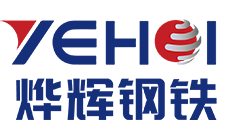Advantages of color coated coil
Release time:
2025-05-21 09:00
The substrate (such as the galvanized layer) prevents the steel from rusting through sacrificial anode protection, and the organic coating isolates the external corrosive medium (rain, salt spray, acid and alkali), forming a "metal + coating" double barrier.
1. Core performance advantages
1. Excellent weather resistance and corrosion resistance
Double-layer protection system:
The substrate (such as the galvanized layer) prevents the steel from rusting through sacrificial anode protection, and the organic coating isolates the external corrosive medium (rain, salt spray, acid and alkali), forming a "metal + coating" double barrier.
▶ Typical data: High-quality fluorocarbon (PVDF) coated color-coated coils can be used in coastal or industrial pollution environments for more than 20 years, and there is no obvious powdering or peeling on the surface.
Targeted anti-corrosion design:
Highly corrosive environment (such as chemical plants, coastal buildings): Use aluminum-zinc substrate + fluorocarbon coating. The corrosion resistance of the aluminum-zinc layer is 2-3 times that of the galvanized layer, and the fluorocarbon coating has strong UV resistance.
Medium-corrosive environment (such as ordinary residences, indoor appliances): Use galvanized substrate + polyester (PE) coating, which is more cost-effective.
2. Rich decorative and personalized
Diversified colors and textures:
Color: Hundreds of standard colors (such as RAL color cards) can be customized, including matte, high gloss, metallic, wood grain and other special effects.
Surface texture: The coating process can achieve relief, orange peel, brushed and other textures to meet the needs of architectural aesthetics or home appliance appearance (such as imitation stone color-coated panels for exterior wall decoration).
Flexible and adaptable shape:
The coating has a strong bonding force with the substrate and can be rolled into complex shapes such as corrugated panels, profiled panels, and arc panels for creative designs such as curved roofs and curved curtain walls.
3. Excellent processing and use performance
Excellent formability:
The coating is flexible and can withstand bending, stamping, rolling and other processing without breaking (such as making 90° right-angle roof panels), suitable for rapid on-site installation.
Functional expansion:
Self-cleaning: Color-coated rolls with photocatalyst coatings can decompose surface pollutants (such as dust and bird droppings) and reduce manual cleaning costs (suitable for exterior walls of high-rise buildings).
Heat insulation and energy saving: infrared reflective coating is used to reduce indoor heat absorption of buildings and save air conditioning energy consumption (such as used on factory roofs).
Anti-static: anti-static color-coated panels are used in electronic factories, data centers and other scenes to prevent dust adsorption and static electricity hazards.
4. Long life and low maintenance cost
Long maintenance-free cycle:
High-quality color-coated coils do not need to be repainted within the design life (10-25 years), which can save more than 50% of maintenance costs compared to traditional bare steel that requires regular painting and maintenance.
Pollution resistance and easy cleaning:
The coating surface is dense and smooth, and rainwater can wash away most of the dust, which is suitable for urban environments with heavy air pollution (such as the exterior walls of industrial plants).
2. Economic and environmental advantages
1. Low cost and high efficiency
The overall cost is lower than the traditional solution:
Although the unit price is 10%-30% higher than that of galvanized coils, it integrates multiple functions of "anti-corrosion + decoration + function", eliminating the subsequent painting process and shortening the construction period (such as color-coated panels can be directly installed on the exterior walls of buildings without on-site painting).
Lightweight and cost reduction:
Under the same strength, color-coated coils can use thinner substrates (such as 0.3-0.8mm), reduce steel usage, and reduce transportation and installation costs (suitable for light steel buildings).
2. Environmental protection and sustainability
Green production process:
Modern color-coated lines generally use environmentally friendly technologies such as chromium-free passivation and water-based coatings to reduce heavy metal and VOC emissions (such as the VOC content of some EU standard color-coated coils <50g/L).
100% recyclable:
After the waste color-coated coils are dismantled, the metal substrate and coating can be separated and recycled, which meets the requirements of the circular economy (such as the recycling and reuse of color steel tiles in old factory buildings).
3. Performance comparison of different coating types
Coating type Weather resistance (lifespan) Chemical resistance Surface hardness Typical use Price index
Polyester (PE) 8-15 years Medium Medium Ordinary building roof panels, home appliance back panels 1.0
Silicon modified polyester (SMP) 10-20 years Good High Exterior walls of high-rise buildings, high temperature environments (such as ovens) 1.2-1.5
High durability polyester (HDP) 15-25 years Excellent High Industrial plants, buildings in acid rain areas 1.5-2.0
Fluorocarbon (PVDF) 20-30 years + Very strong Highest Coastal buildings, landmark buildings, automotive topcoats 3.0-5.0
Acrylic acid (AC) 5-8 years Poor Low Temporary buildings, low-cost home appliance panels 0.8
4. Typical application scenarios and advantages
1. Construction field
Industrial plants: using aluminum zinc substrate + HDP coating color coated coil, resistant to industrial exhaust gas corrosion, 15 No need for renovation for years.
Commercial building curtain wall: Customized fluorocarbon coated metal color coated panels, which are both weather-resistant and high-end, are used for the exterior walls of shopping malls and office buildings.
Agricultural greenhouses: Use fingerprint-resistant color coated coils, which have a smooth surface and are non-sticky, reducing the corrosion of condensed water on steel (such as greenhouse roofs).
2. Home appliance field
Refrigerator panel: High-gloss polyester color coated coils are combined with VCM (laminated metal sheet) technology to achieve mirror or wood grain effects and increase product added value.
Air conditioner outdoor unit: Weather-resistant color coated coils resist ultraviolet rays and acid rain, extending the service life of outdoor units (such as rainy areas in the south).
3. Automobile and transportation field
Commercial vehicle body: Stone-resistant color coated coils (coatings add wear-resistant fillers) are used for truck side panels to resist the impact of road gravel.
Containers: Epoxy primer + polyurethane topcoat color coated coils, resistant to marine salt spray corrosion, suitable for ocean shipping containers.
5. Purchase suggestions: Match performance according to needs
Environmental corrosion level:
Indoor/dry environment: PE coating is sufficient (such as office ceiling).
Outdoor/high humidity and high salt environment: HDP or PVDF coating is preferred (such as coastal villa roof).
Decoration requirements:
Need to keep bright colors for a long time: choose fluorocarbon or high-durability polyester (such as municipal engineering buildings).
Temporary buildings: optional acrylic coating to reduce costs (such as temporary dormitories on construction sites).
Processing difficulty:
Complex shapes (such as corrugated plates): Choose PE or SMP types with good coating flexibility to avoid cracking during processing.
Summary
Color-coated coils break through the limitations of "single anti-corrosion" of traditional steel through the composite design of "metal substrate + organic coating", and become an all-round material with both protection, aesthetics, functionality and economy. Its core competitiveness lies in the one-stop solution to the appearance, durability and cost pain points in the construction and industrial fields. In the future, with the technological upgrade of environmentally friendly coatings and intelligent coatings (such as self-healing coatings), color-coated coils will open up a wider range of application scenarios in green buildings, new energy equipment and other fields.
Send a message, enter @ or / to select a skill
Related News
Advantages of Carbon Steel Pipe
Carbon steel pipe is a pipe made of carbon steel. It is widely used in industry, construction, energy, transportation and other fields due to its low cost, mature technology and stable performance. The following is an analysis of its core advantages and specific application scenarios:
Advantages of color coated coil
The substrate (such as the galvanized layer) prevents the steel from rusting through sacrificial anode protection, and the organic coating isolates the external corrosive medium (rain, salt spray, acid and alkali), forming a "metal + coating" double barrier.
Roof and wall materials: Manufacture of color-coated steel plates (such as color steel tiles), building roof panels, and exterior wall decorative panels, using the zinc layer to resist rain and ultraviolet erosion and extend service life (common coating weight 60-275g/m²).
Core ingredients: iron + chromium (≥10.5%) + nickel (partial grades) + molybdenum and other elements Performance characteristics: corrosion resistance, high temperature resistance, high strength, beautiful surface
The soft magnetic properties of silicon steel make it the core material for electromagnetic conversion in the fields of electricity, electronics, and home appliances. It is mainly used to manufacture electromagnetic devices such as transformers, motors, reactors, and relays. Specific applications include:
How to make color coated steel plate
Cold-rolled steel sheet: The surface is flat, suitable for coatings with high precision requirements, but the corrosion resistance is poor and requires subsequent coating treatment. Hot-dip galvanized steel sheet (GI sheet): The surface of the substrate is galvanized (the thickness of the zinc layer varies from 5-100μm), and the corrosion resistance is significantly improved. It is the most commonly used color-coated substrate.






